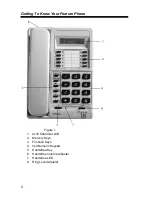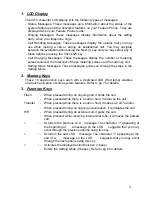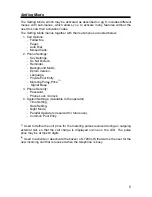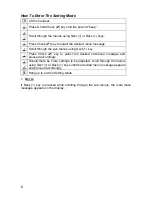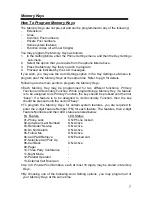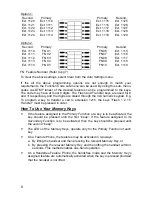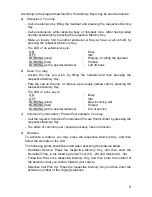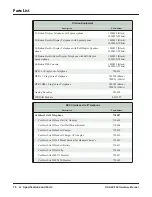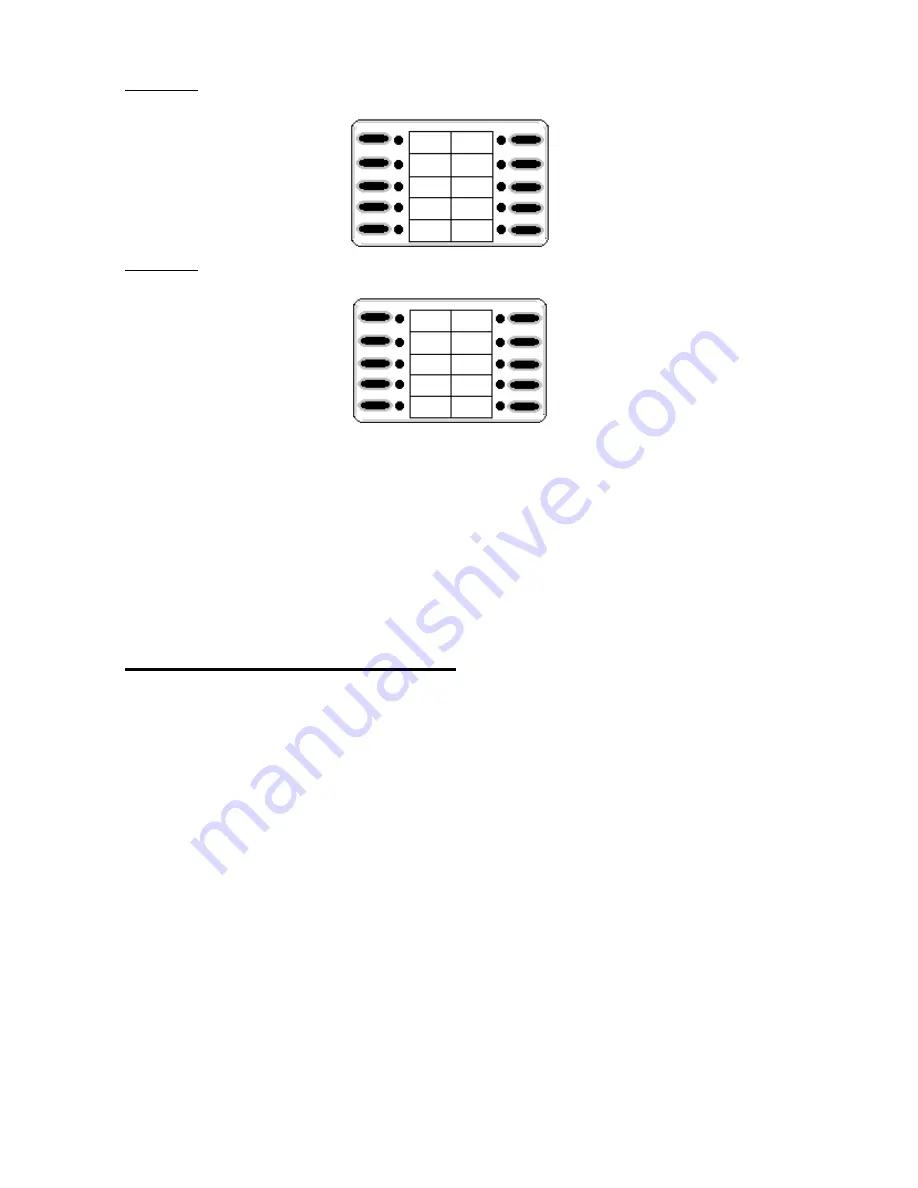
8
Option 1:
Second. Primary
Primary Second.
Ext. 1120
Ext. 1110
Ext. 1115
Ext. 1125
Ext. 1121
Ext. 1111
Ext. 1116
Ext. 1126
Ext. 1122
Ext. 1112
Ext. 1117
Ext. 1127
Ext. 1123
Ext. 1113
Ext. 1118
Ext. 1128
Ext. 1124
Ext. 1114
Ext. 1119
Ext. 1129
Option 2:
Second. Primary
Primary Second.
Ext. 1110
FN 01
FN06
Ext. 1115
Ext. 1111
FN 02
FN07
Ext. 1116
Ext. 1112
FN 03
FN08
Ext. 1117
Ext. 1113
FN 04
FN09
Ext. 1118
Ext. 1114
FN 05
FN10 Ext.
1119
FN : Feature Number (Refer to pg 7)
To clear the above settings, select
Clear
from the
Auto Settings
menu.
If the all the above programming options are not enough to match your
requirements, the Function Code sub-menu can be used. By using this sub- menu,
codes (as DTMF tones) of the desired features can be programmed to the keys.
The code may have at most 8 digits. The Flash and Transfer keys are used for #
and
respectively and the digits are dialed through the 3x4 numeric keypad. E.g.
To program a key to transfer a call to extension 1215, the keys “Flash 1 2 1 5
Transfer” must be pressed in order.
How To Use Your Memory Keys
•
If the feature assigned to the
Primary Function
of a key is to be activated, the
key should be pressed until the
first “beep”
. If the feature assigned to its
Secondary Function
is to be activated, then the key should be pressed until
the
second “beep”.
•
The
LEDs
of the
Memory Keys
, operate
only
for the
Primary Function
of each
key.
•
On a Feature Phone, the features may be activated in two ways:
a. By lifting the handset and then pressing the relevant
Memory Key
, or
b. By pressing the relevant
Memory Key
and then lifting the handset within 3
seconds. This method enables one-hand operation.
•
On a Handsfree Feature Phone, the handsfree mode and the
Memory Key’s
assigned feature are automatically activated when the key is pressed provided
that the handset is not lifted.


